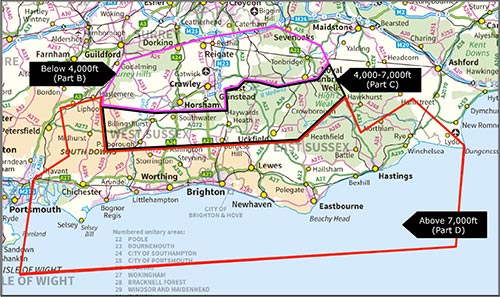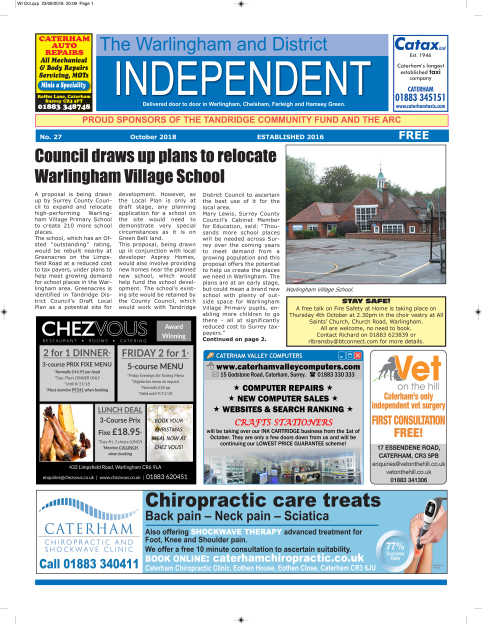|

People living across Sussex, Surrey, Kent, Essex, Suffolk and Hampshire are being urged to have their say on how the airspace above them is used in the future - with a particular focus on reducing the impact of aircraft noise.
NATS, the UK’s leading provider of air traffic services, and Gatwick are halfway through a joint consultation on this proposed airspace change. Local people are being asked for input to help shape the design of routes for the future.
This input could be on noise sensitive sites such as open areas prized for their quietness or noise sensitive industries – specifically any place which could be affected if aircraft were to fly directly over it. Stakeholders are also being asked for their views on how to balance CO2 with noise, as avoiding some places means flying longer routes that produce more CO2.
This information will be used to help establish new routes which offer the most benefit with the least possible impact.
At low levels near London Gatwick the solution may be to offer some sites ‘respite’ – periods when there will be no flights directly overhead. This could be at certain times of the day or days of the week - all suggestions both for locations and timings are welcome.
Airspace above the south of England is some of the busiest in the world. This consultation is the first stage in a wider programme of proposed changes to deliver the UK’s Future Airspace Strategy (FAS), which will be legally required to come into effect in 2020. Gatwick is the first major airport to consult on all levels of its airspace and all other airports will be required to follow suit.
Tom Denton, Head of Corporate Responsibility at London Gatwick, said: “Aircraft have to fly somewhere, so we really need local people to look around their communities, imagine the impacts of being overflown more than today, and feedback on sites and businesses this could have a detrimental impact on. We really need local people’s help on this to ensure new routes have the least impact possible.”
Paul Haskins, General Manager of London Terminal Control, NATS, said: “We have been asked why we are consulting on swathes of airspace instead of routes, and have clarified this on the website – www.londonairspaceconsultation.com - where there is all of the information necessary to make an informed response.
“In previous consultations, where we have specified routes, we have primarily received responses from people under them – who unsurprisingly have objected. We are consulting early in the process this time on swathes of airspace within which the routes will have to be positioned, and we are asking people to tell us what local information we should factor into designing final route positions. We are asking everyone to assume that a new route may go over them.”
Launched on 15 October, the London Airspace Consultation (LAC) runs until 21 January 2014. It is available online for everyone to view, consider and leave feedback.
The consultation is available online at www.londonairspaceconsultation.co.uk. The postcode search facility and clickable maps with consultation areas clearly marked makes it easy to see which proposed changes have the most relevance to a specific location. Feedback can be given directly on the website.

|








